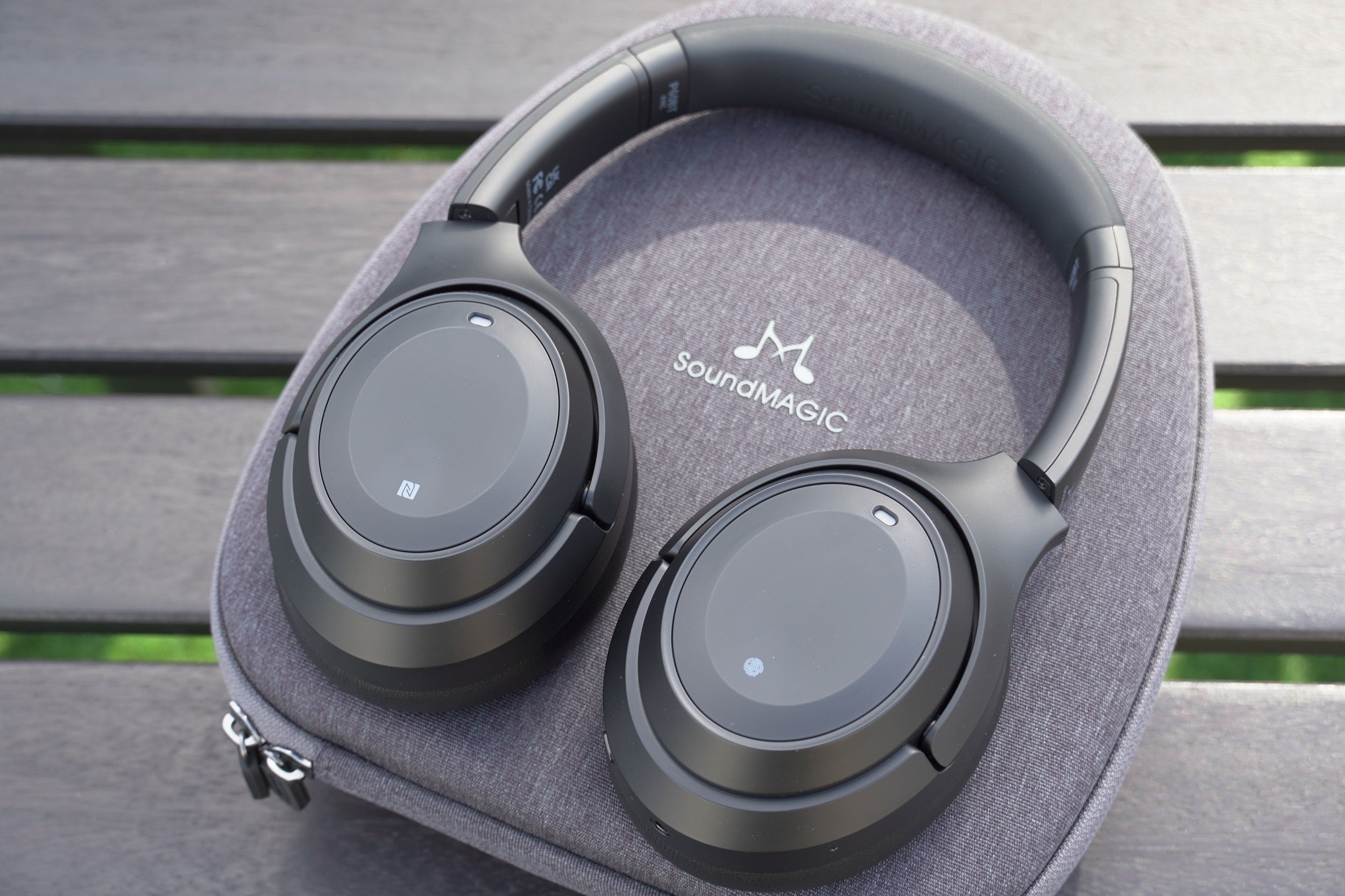Sony WH-1000XM4 Review
An excellent and now more affordable noise canceller from Sony
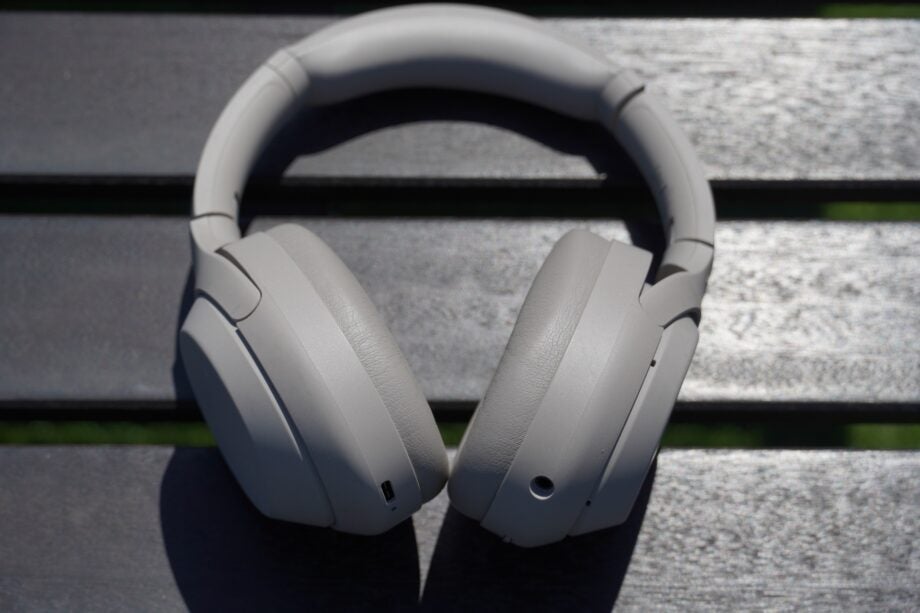

Verdict
An improvement on their predecessors, the WH-1000XM4 have been replaced by the WH-1000XM5 as the best performing noise cancellers. However, the cheaper, more affordable price ensures these headphones are a great pair for those who can’t afford the newer model.
Pros
- Superb audio
- Impressive noise cancellation
- Lightweight and comfortable
- Useful smarts
Cons
- No IP resistance
Availability
- UKRRP: £349
- USARRP: $349
- EuropeRRP: €379
- CanadaRRP: CA$498
- AustraliaRRP: AU$499
Key Features
- SBC, AAC & LDACSupports high-quality music playback with LDAC
- Google Assistant & Amazon AlexaFeatures support for both major digital assistants
- Speak to ChatPauses playback to allow the wearer to have a conversation with someone else without taking the headphones off
Introduction
From the moment we first listened to the WH-1000XM4, we knew Sony was onto another winner.
In the two years they’ve been on the market they’ve fended off challenges from the Bose QuietComfort 45 to Apple’s AirPods Max to remain our best overall headphone pick, but now they’ve met their match.
And the headphone that’s knocked them off the top step are Sony’s own WH-1000XM5. Even with the XM5’s appearance, for £250, the WH-1000XM4 remain an excellent, affordable alternative.
Design
- Redesigned headband structure
- New wear sensor for auto-playback
- Tidier design
Aesthetically the WH-1000XM4 look similar to the WH-1000XM3 but upon closer inspection several changes have been made.
These extend from the more abrasive and less glossy material the XM4 are constructed from to softer earpads. Sony says they’ve increased the amount of padding and the result is a more pliable and cushier feel. The pressure they exert is minimal and the fit is snug, making them a good choice option for long-distance travel.
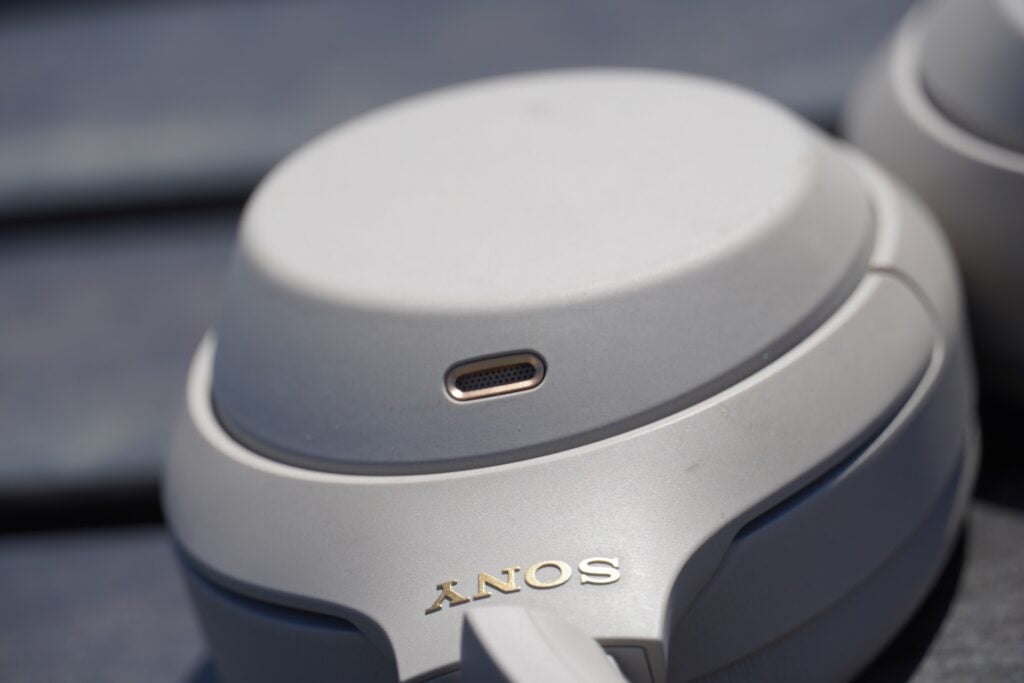
Other changes include a wider headband structure that eases pressure across the head, and the hinge where the headband and the ear cup connect has been tidied up. The profile of the ear cups has been streamlined, though some may feel the XM4s are less stylish compared to the competition.
The layout of buttons on the ear-cups remains the same with the NC/Ambient button on the left rechristened as the Custom button. Next to that is the Power button and 3.5mm jack, with the USB-C port on the right ear cup. The touch controls feel more responsive than they were on the XM3, which eases the pain for those who prefer physical controls.
At 254g they weigh one single gram less than the XM3. Sony hasn’t stated an IP rating, so don’t assume the XM4 to be waterproof or water resistant.
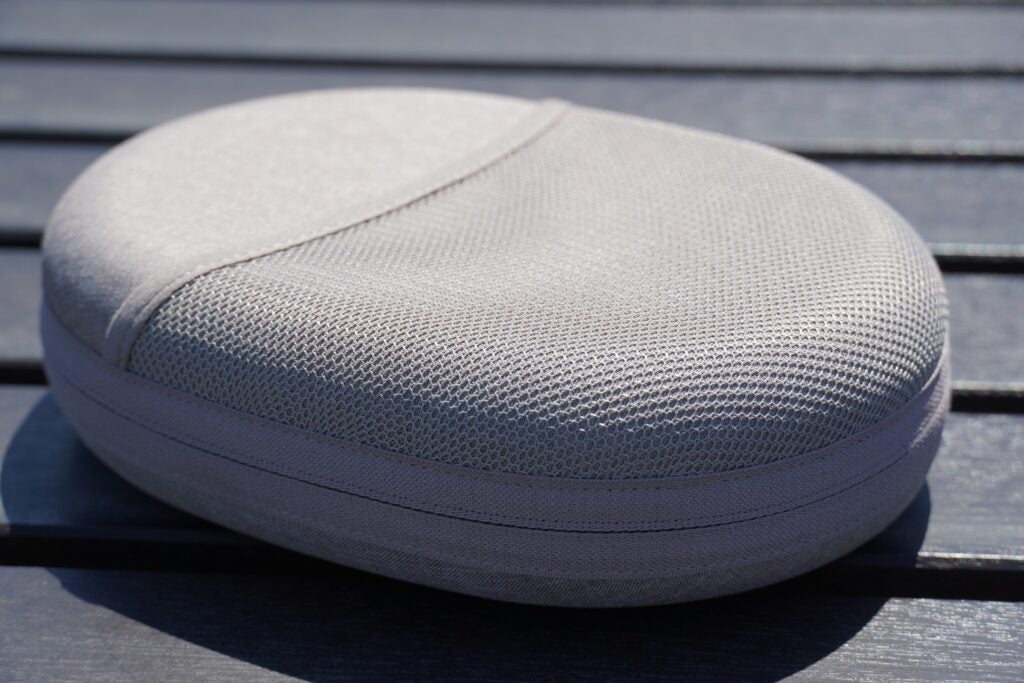
Unlike the new WH-1000XM5, the headphone can be collapsed inwards, and if you want to keep them protected there’s a carry case with a USB-C, wired cable and airplane adapter tucked inside. For a different look there’s a choice of black and ‘platinum’ silver, white and midnight blue finishes.
Features
- Speak to Chat pauses music when speaking
- Excellent noise cancelling
- LDAC support for wireless hi-res audio playback
Placed in the left earcup is small sensor that works in tandem with acceleration sensors to detect when the headphones are being worn. It works most of the time, but there are times where you place them around your neck and the music just keeps on playing.
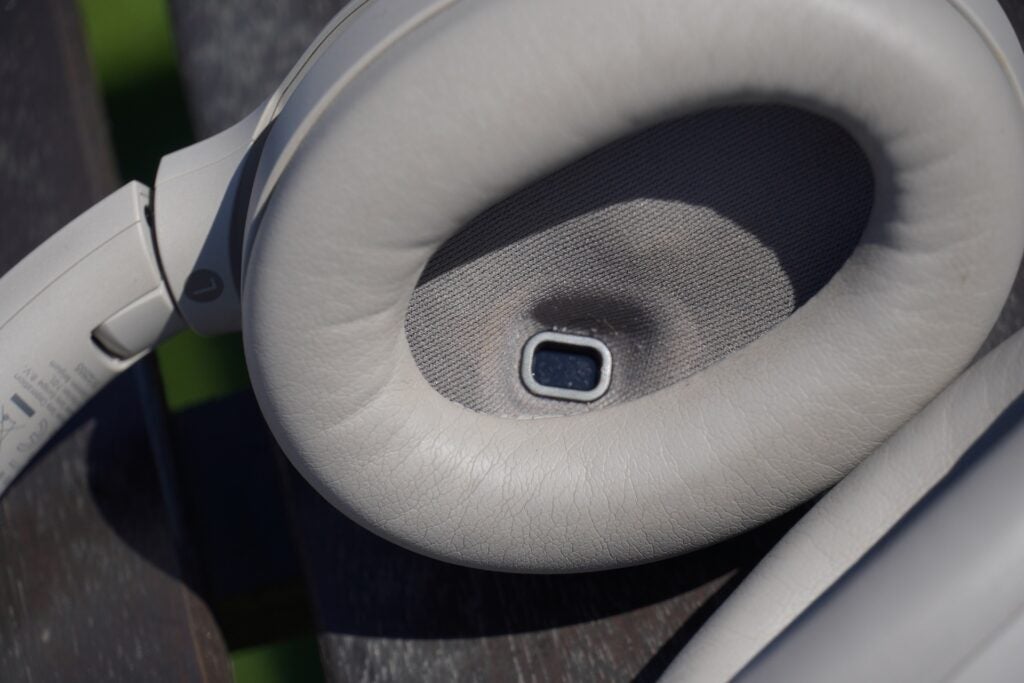
Speak-to-Chat realises when you’re talking and pauses playback so you can chat to someone else without taking the headphones off. If you’re someone who likes to sing perhaps keep this feature off. Playback resumes after thirty seconds, but the duration as well as the sensitivity of the voice pick-up, can be adjusted in the app.
Adaptive Smart Control adjusts the noise cancellation and Ambient Sound based on your actions, whether you’re standing, sitting, travelling on transport or walking about, etc. Enable location data and the feature is given more autonomy as it’s able to learn your frequent haunts and locations over time, tailoring the noise-cancelling performance to that location.
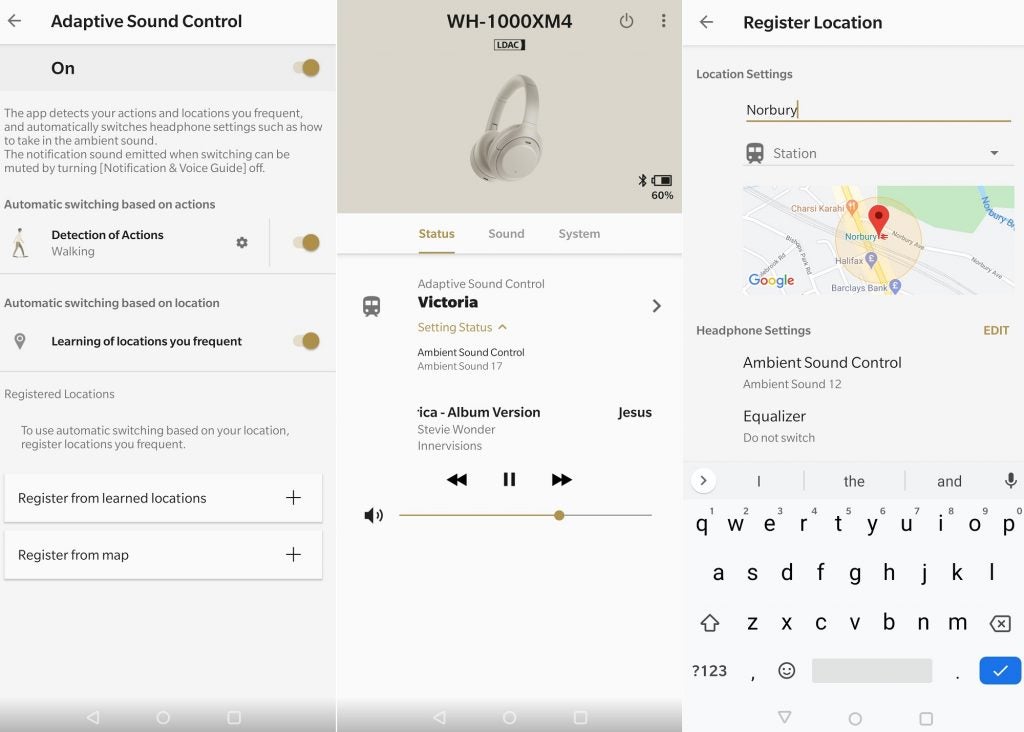
You can take matters into your hands by registering locations and different sound profiles with a Google Maps-esque interface, giving places names and ring-fencing the location to make the detection area bigger or smaller.
Give the app a bit of time to detect where you are, and it’ll bring up the preferred noise-cancelling/ambient sound modes. It’s a simple, useful piece of tech, and once in play it doesn’t require much input from yourself.
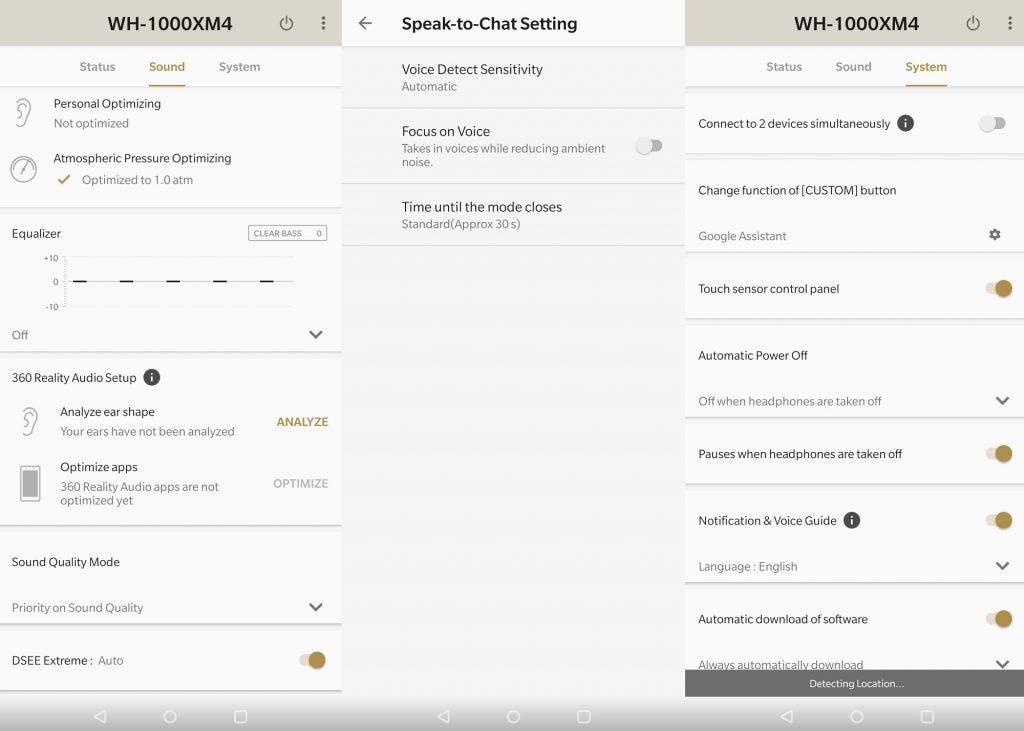
Some were disappointed by the WH-1000XM3’s call quality, so Sony says it’s made improvements with the Precise Voice Pickup feature. With five microphones the headphones should, in theory, pick up your voice better.
There’s Bluetooth multipoint support for connecting to two devices at once, though this isn’t activated by default and when it is activated then LDAC is disabled. There’s voice assistance in Amazon Alexa and Google Assistant (or Siri), which you can engage with the Custom button.
The DSEE Extreme engine has been developed with help from Sony Music Studios Tokyo. It uses Edge-AI to upscale digital tracks in real time by recognising the instrumentation, genre and other aspects to restore high range sounds lost through compression.
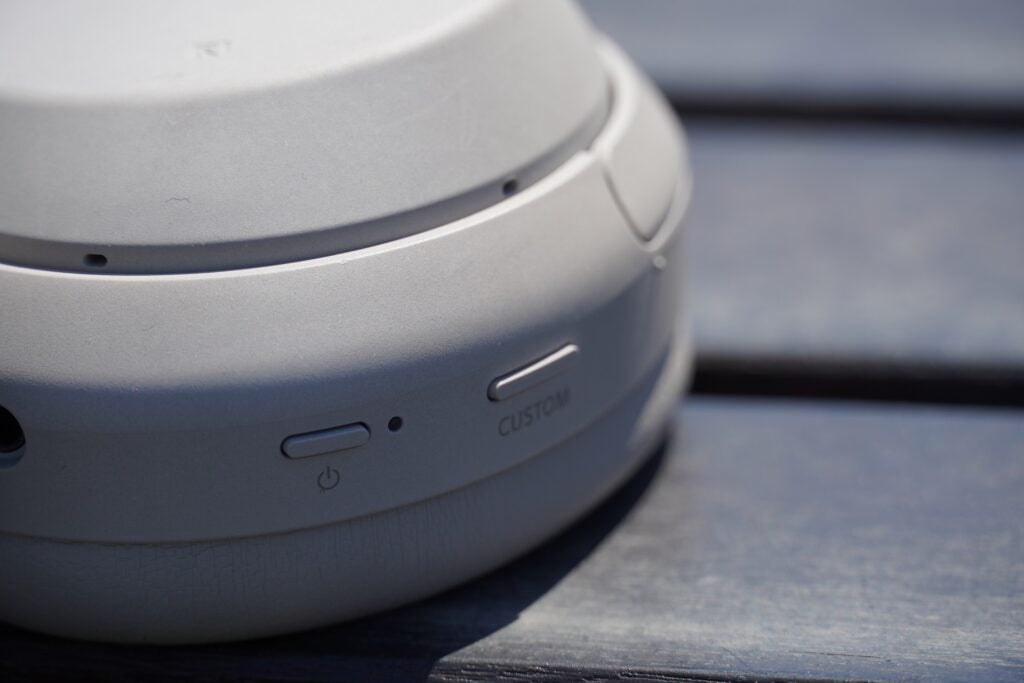
The HD Noise Cancelling Processor QN1 chip suppresses high and mid-frequency sounds via Sony’s Dual Noise Sensor (two microphones in each ear cup). This is alongside an algorithm that applies noise cancelling in real time with a Bluetooth Audio SoC (System on Chip) that Sony claims can sense and adjust music and noise over 700 times per second.
Whether that figure is true or not, the noise cancelling performance is excellent, keeping sounds at bay with most noises successfully nipped in the bud, though it achieves this with a slight noise cancelling tone. The Quick Attention Mode lets sound filter through when the right ear cup is covered. I’d say the WH-1000XM5 are the better noise cancellers, especially when dealing with wind noise and the transparency mode on the newer model is impressively clear. When cancelling voices though, I think the XM4 do a slightly better job.
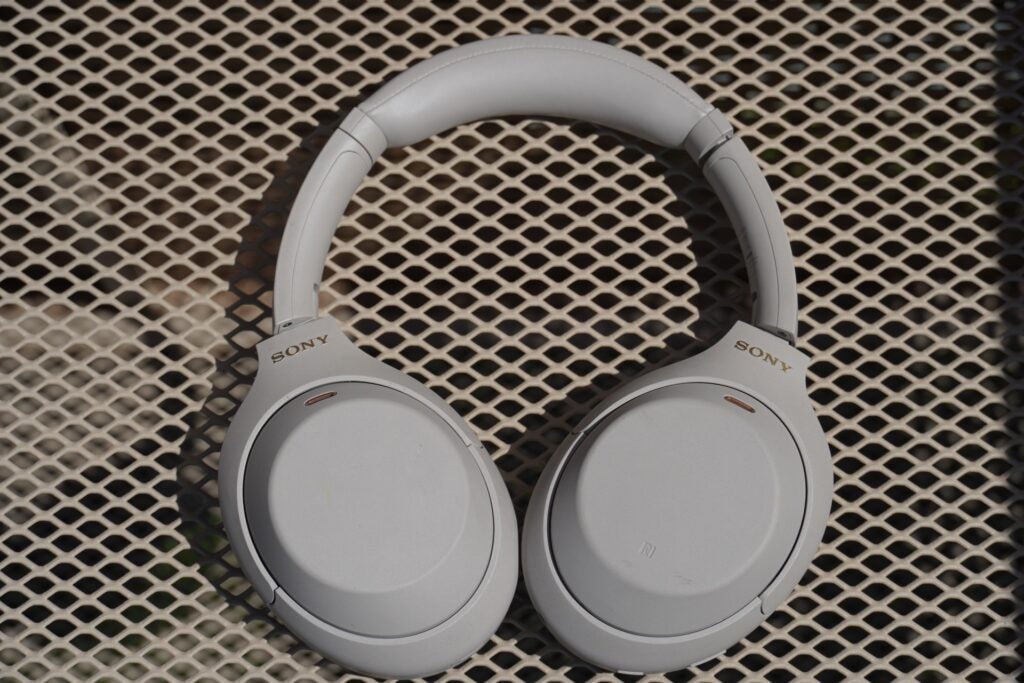
The WH-1000XM4 has SBC, AAC and LDAC, the latter is a mode of hi-res wireless audio transmission. With LDAC baked into Android OS from 8.0 onwards, the lack of aptX is no big loss. Bluetooth connectivity was strong as walking through London and busy terminals such as London Bridge, Victoria and Canary Wharf, I didn’t experience any interference or choppiness. The WH-1000XM4 also supports Google Fast Pair 2.0 for quick connection to Android devices.
Battery life remains the same as at 30 hours with ANC on with 38 hours possible with ANC turned off. A ten-minute charge is enough for an extra five hours of use.
Sound Quality
- Improved sound over XM3
- DSEE Extreme removes noise from tracks
- Impressively articulate
The WH-1000XM4 pack 40mm driver units with Liquid Crystal diaphragms of the WH-1000XM3, and while there’s a similarity between new and the old, the XM4 are a definite step forward over the WH-1000XM3.
They’re more musical in their approach with an extra layer of refinement and clarity. The more boisterous and energetic tone of the WH-1000XM3 has been toned down for a smoother and more articulate performance.
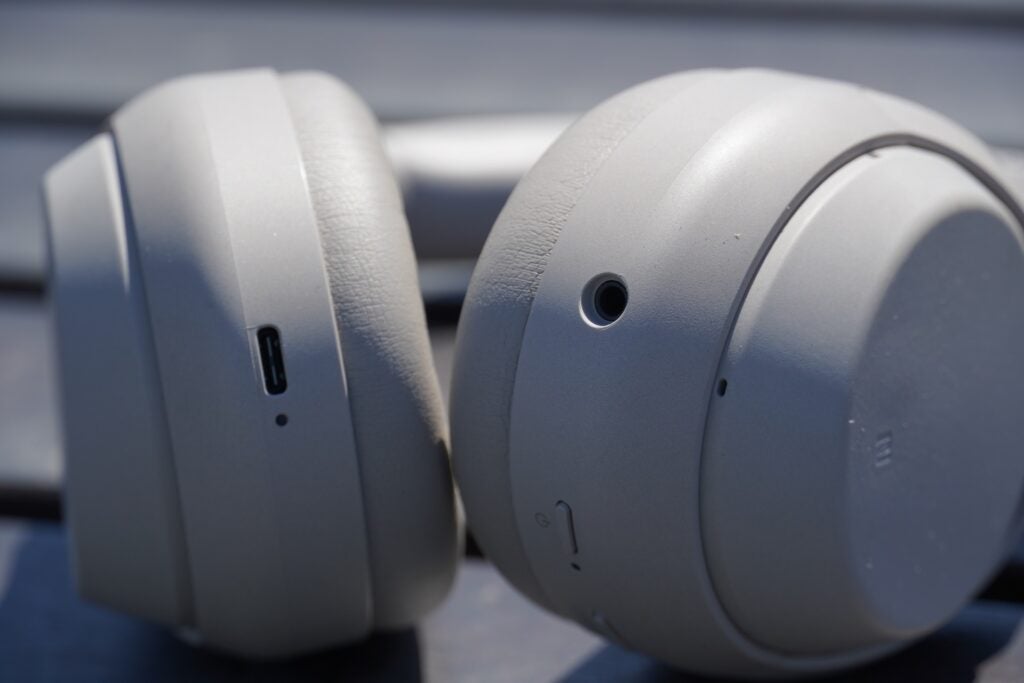
They show more confidence when handling the low end of the frequency range. A listen to Hudson Mohawke/Lumice’s TNGHT EP is pumped through the drivers with tight bass, and with other music the WH-1000XM4’s performance is well defined but malleable to fit whatever track you’re listening to. It gives music a solid foundation to build upon.
The WH-1000XM4 also extract more detail from mid-range frequencies for a clearer performance. The improvements can be subtle, but instruments are better defined, and the separation of elements within a track is clearer. The XM4 describes the soundstage with a greater fidelity than before. Go back to the WH-1000XM3 and they sound fuzzier and less articulate.
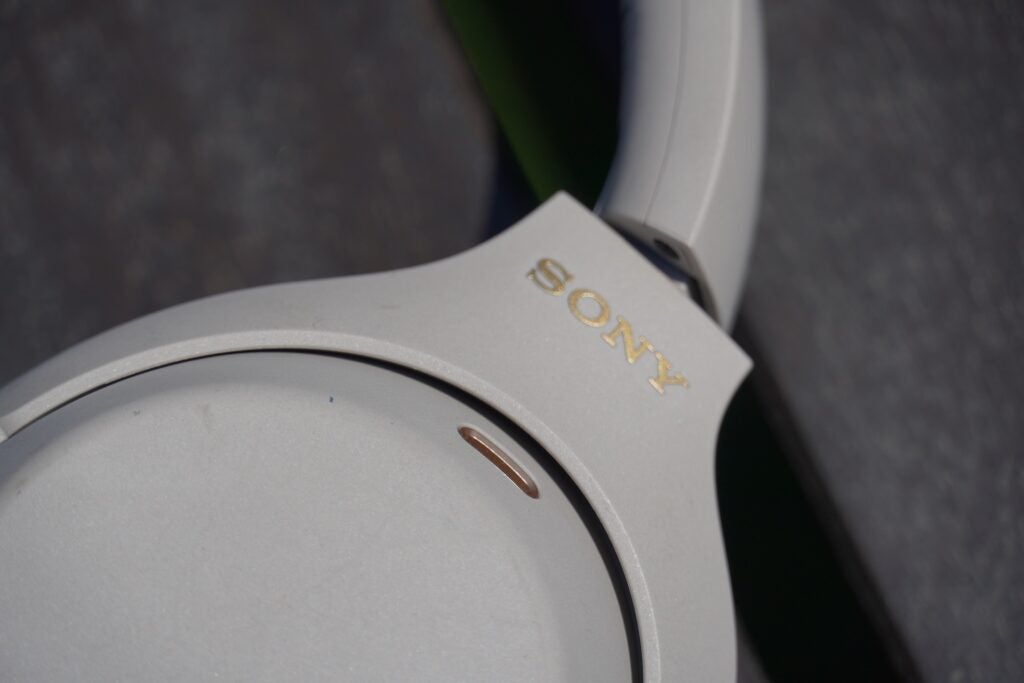
Higher frequencies also benefit from the extra refinement, though they’re not as piercing as they were on the WH-1000XM3. A Tidal Master track of GoGo Penguin’s Raven and the WH-1000XM4 doesn’t hit the treble as hard but there’s a better sense of articulation and definition.
All this adds up to a more cohesive performance. The XM4 exhibit a better sense of control: dynamically they’re more impactful in registering the difference loud and quiet, and they achieve a better rhythmic precision, timing and attack for a more exciting listen. Everything feels tighter, clearer and knitted together better.
The DSEE Extreme also removes lots of noise from tracks. The recording of Julie London’s Cry Me A River sounds harsh and with the XM4 the song is transformed to sound less crude and is much easier on the ears than on the XM3.
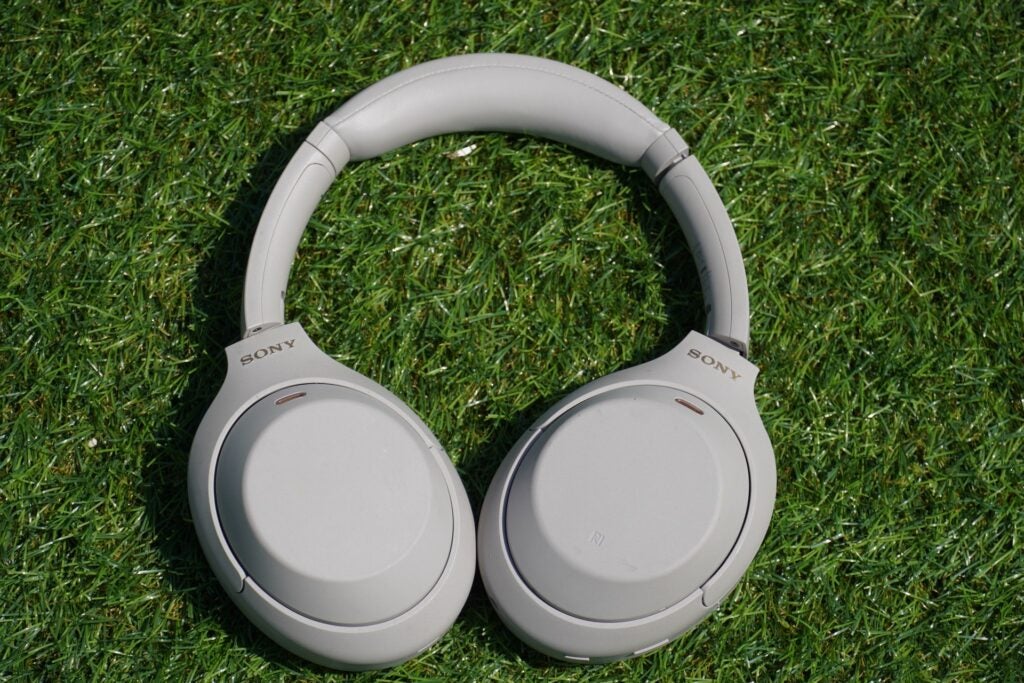
If you’re reading this review, you’ll be wondering how much of an improvement the WH-1000XM5 are, and the answer is that they offer even more refinement. Its bass performance offers more depth and accuracy, with the mid-range holds together with more clarity and a richness to its tone that makes the XM5 the more musical-sounding pair.
The XM4 is no slouch and at their price they’re excellent and more affordable alternative.
Latest deals
Should you buy it?
If you’re upgrading from the XM3 The performance is improved across all aspects, making the XM3 sound rather than ordinary.
If you want the latest Sony has to offer The XM5 are Sony’s best premium noise cancellers yet, so if you have the budget to go for them, we can’t think of many reasons not to.
Final Thoughts
From the comfortable, lightweight fit, to the thorough noise cancellation, intuitive smart features and the refined audio performance, Sony has knocked it out of the park with the WH-1000XM4. They’re beaten by the WH-1000XM5 but at their lower price, I’d struggle to think of a reason not to invest in one of the best-sounding ANC headphones. Well, unless you have the money to the latest model of course.
How we test
We test every headphones we review thoroughly over an extended period of time. We use industry standard tests to compare features properly. We’ll always tell you what we find. We never, ever, accept money to review a product.
Find out more about how we test in our ethics policy.
Tested for more than a week
Tested with real world use
FAQs
Sony doesn’t list an IP rating for the WH-1000XM4 so you’re advised to no let water or sweat get on them.
You need to download the Sony Headphones Connect app first, sync the headphones with the app and you can check whether the firmware update for the headphones is the most up to date by clicking on the three dotted symbol in the top right corner.
Full specs
Sustainability
TrustedReviews’ holds the fact that global warming is not a myth as a core value and will continuously endeavor to help protect our planet from harm in its business practices.
As part of this mission, whenever we review a product we send the company a series of questions to help us gauge and make transparent the impact the device has on the environment.
We currently haven’t received answers to the questions on this product, but will update this page the moment we do. You can see a detailed breakdown of the questions we ask and why in our sustainability info page.

